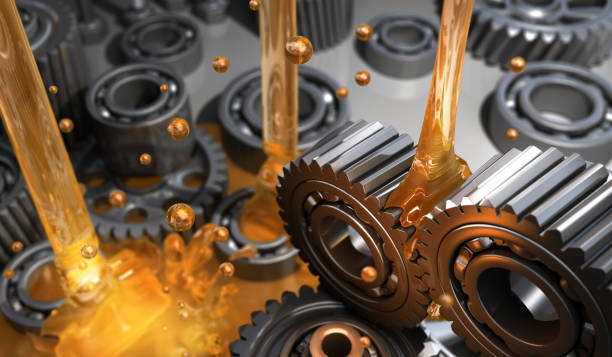
Scuffing is a catastrophic failure mode in lubricated contacts and can occur without warning especially those operating at high pressures and/or sliding speeds e.g., automotive hypoid gear, cam-follower and electric vehicle transmission system. It is triggered by a sequence of events starting with failure of oil film, asperity to asperity contact, removal of tribofilm and finally native oxide layer leading to metal to metal adhesive welding. A number of standards based on different test configurations (Type-I i.e., Four Ball, Timken, SRV, Pin on Vee, Block on Ring) have been developed over the years to evaluate scuffing resistance of materials and lubricants (Figure 1). Most of these rely on increasing either the load and/or temperature to test durability of oil film and boundary additives. There are several artifacts associated with Type-I scuffing tests that can pose challenges in understanding and decoupling effects of base oil viscosity and antiwear additives on scuffing resistance (Table 2a). Twin Disc with contra-rotation (Type-II) shown in Figure 1, offers a novel approach to address the shortcomings of Type-I scuffing tests (Table 2b). (Note : the contra-rotation method was first proposed by Blok in 1948, Proceedings of Summer Conference—MIT, Mechanical Wear, vol. 61(25), pp. 199–227 (1948))
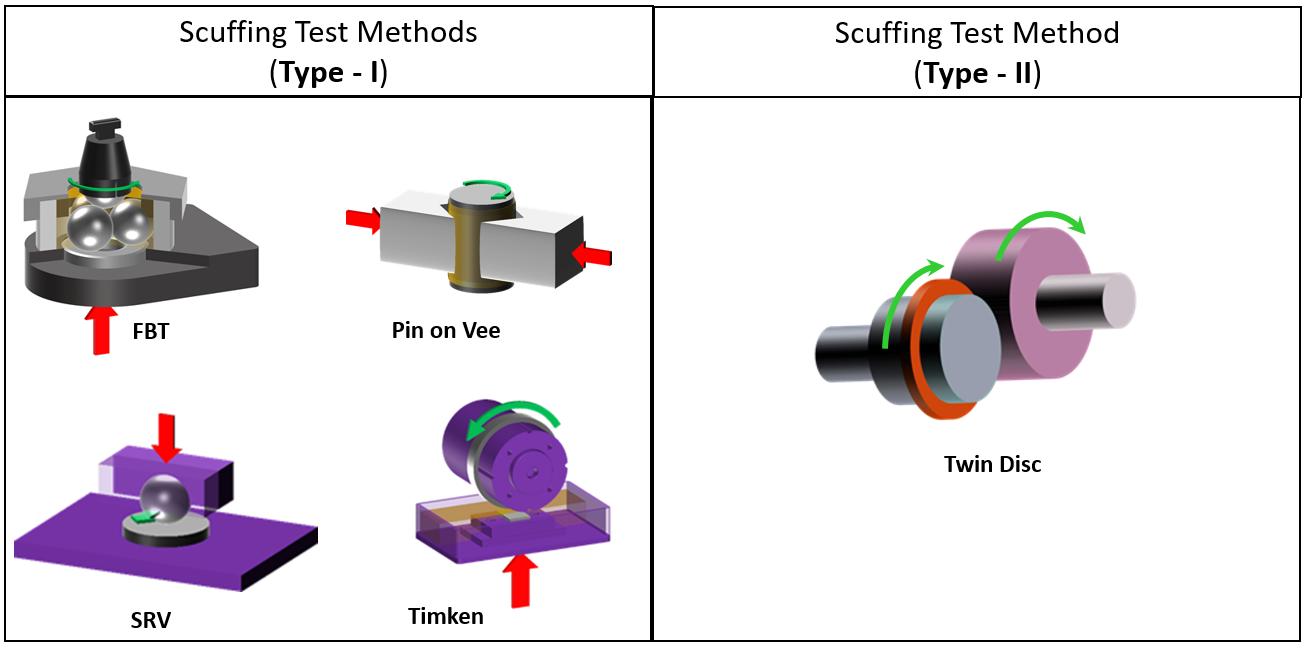 Figure 1 Type-I vs Type-II Scuffing Test Methods
Figure 1 Type-I vs Type-II Scuffing Test Methods
Table 2a Artifacts and shortcomings of Type-I Scuffing Test Methods
Table 2b Benefits of Type-II Scuffing Test Method
The twin disc is a popular precursor to FZG gear testing to screen lubricants. In this report, we investigate and compare the standard co-rotation method with the novel contra-rotation method using Ducom Twin Disc RoR 2.0.
Materials and Method
Ducom Twin Disc RoR 2.0 (Figure 3a) features embedded friction force and multi-axis vibration sensors to capture critical failure events (Figure 3b). A recirculating lubricant supply with inline filter delivers heated lubricants to the rolling-sliding contact. A unique multi-nozzle arrangement ensures that both discs were also wetted with lubricant thereby ensuring bulk isothermal conditions (Figure 3c). A programmable servo-loading ensures accurate load stability during the test. Speed (from 0.1 to 3000 rpm) and direction of rotation for both discs can be independently controlled using two high performance drives.
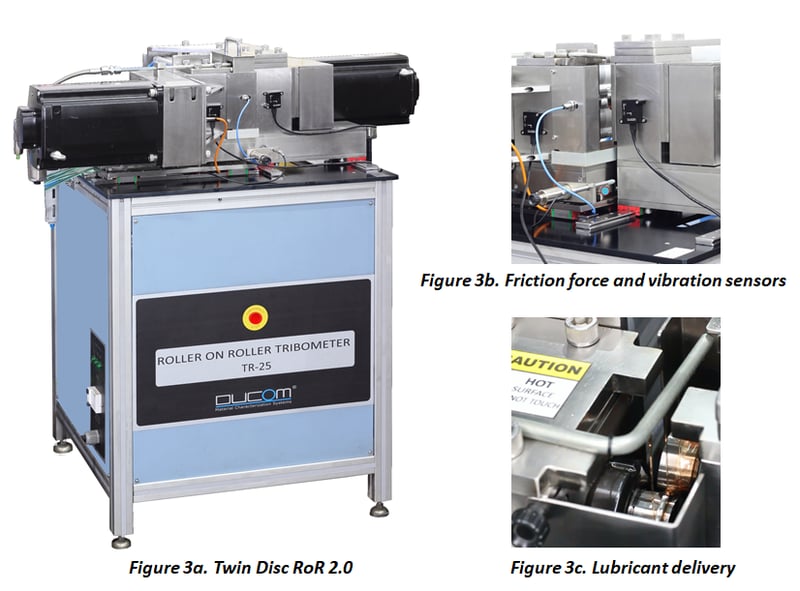 Figure 3a. Ducom twin disc RoR 2.0 Figure 3b. Vibration, friction and eddy sensors Figure 3c. Twin disc line contact with lubricant delivery
Figure 3a. Ducom twin disc RoR 2.0 Figure 3b. Vibration, friction and eddy sensors Figure 3c. Twin disc line contact with lubricant delivery
The rollers are designed to ensure a line contact width of 3 mm (Table 1). A comparison of FZG load step, Hertzian contact pressure and equivalent load required for twin disc is shown (Table 1). For a typical 3 mm line contact, the loads required range from 1000 to 7000 N on the twin disc for simulating FZG load steps 8 through 18.
 Table 1. Comparison of FZG load stage and twin disc equivalent load for a typical 3 mm line contact for 40 mm diameter discs.
Table 1. Comparison of FZG load stage and twin disc equivalent load for a typical 3 mm line contact for 40 mm diameter discs.
Two different speed profiles were programmed (a) co-rotation, which resulted in a positive fluid entrainment into the contact (Figure 4a) (b) contra-rotation, which resulted in near-zero fluid entrainment into the contact i.e., starvation (Figure 4b). The detailed test conditions and parameters are listed in Table 5. The twin discs were pre-conditioned (1 GPa, 5% slip) prior to start of the actual tests so as to form tribofilms for subsequent scuffing investigation.
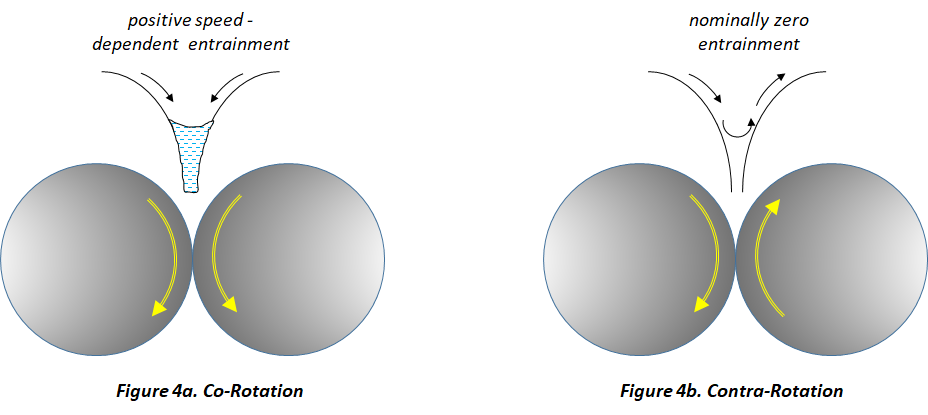 Figure 4a. Co-rotation leading to positive speed-dependent fluid entrainment Figure 4b. Contra-rotation leading to nominally zero fluid entrainment or starvation
Figure 4a. Co-rotation leading to positive speed-dependent fluid entrainment Figure 4b. Contra-rotation leading to nominally zero fluid entrainment or starvation
 Table 5a. Test conditions for scuffing using co-rotation and contra-rotation Table 5b. Stepped load profile used during testing.
Table 5a. Test conditions for scuffing using co-rotation and contra-rotation Table 5b. Stepped load profile used during testing.
The results of load, lubricant temperature as well as friction force and vibration for actual tests are shown in Figure 6. Scuffing was indicated by a steep rise in friction and vibration leading to auto-stop of the test at the given load level.
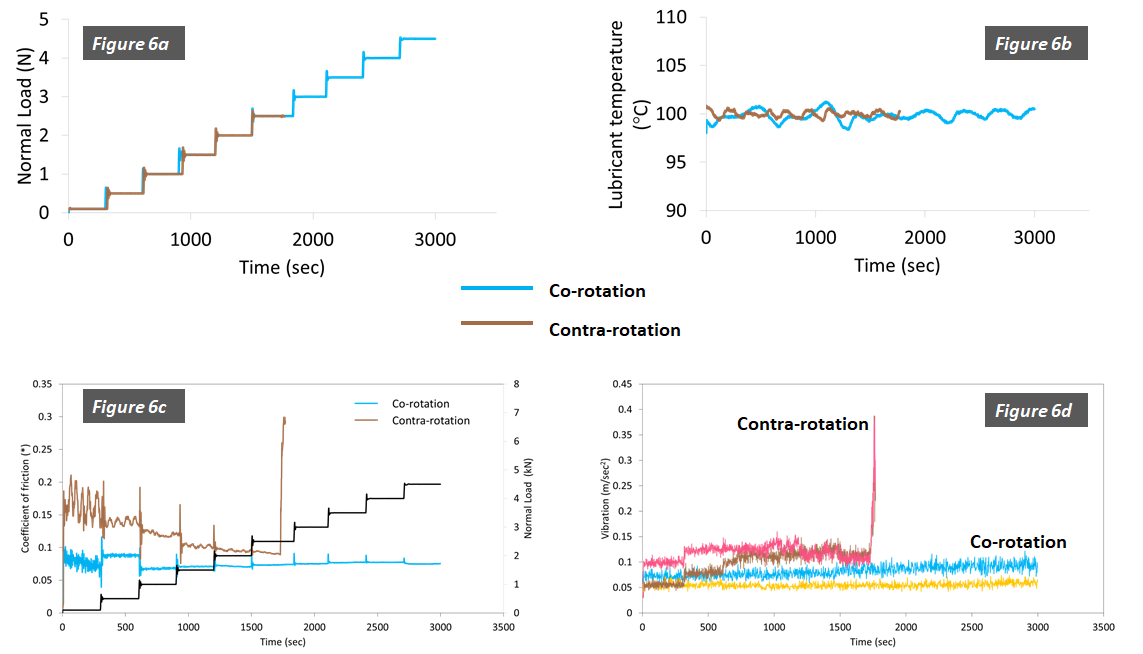 Figure 6a. Stepped load profile Figure 6b. Lubricant inlet temperature Figure 6c. Friction vs. load Figure 6d. Vibration levels during test
Figure 6a. Stepped load profile Figure 6b. Lubricant inlet temperature Figure 6c. Friction vs. load Figure 6d. Vibration levels during test
The lubricant inlet temperature was maintained at 100 ± 2 °C during the tests (Figure 6b). Load was increased in steps to 5 kN for co-rotation and the test stopped as no scuffing could be seen. For contra-rotation, the test auto-terminated at 2.5 kN due to scuffing (Figure 6a). Coefficient of friction for contra-rotation clearly shows a steep rise at 2.5 kN load step (Figure 6c) and corresponding increase in vibration (Figure 6d). There was no change in friction (Figure 6c) and vibration (Figure 6d) in case of co-rotation even upto 5 kN. Average friction for contra-rotation (CoF 0.13) was twice as high as co-rotation (CoF 0.07) and also noisy indicating that the test was running under starvation with a potentially non-uniform tribofilm. The images and optical microscopy of the rollers post-test are shown in Figure 7.
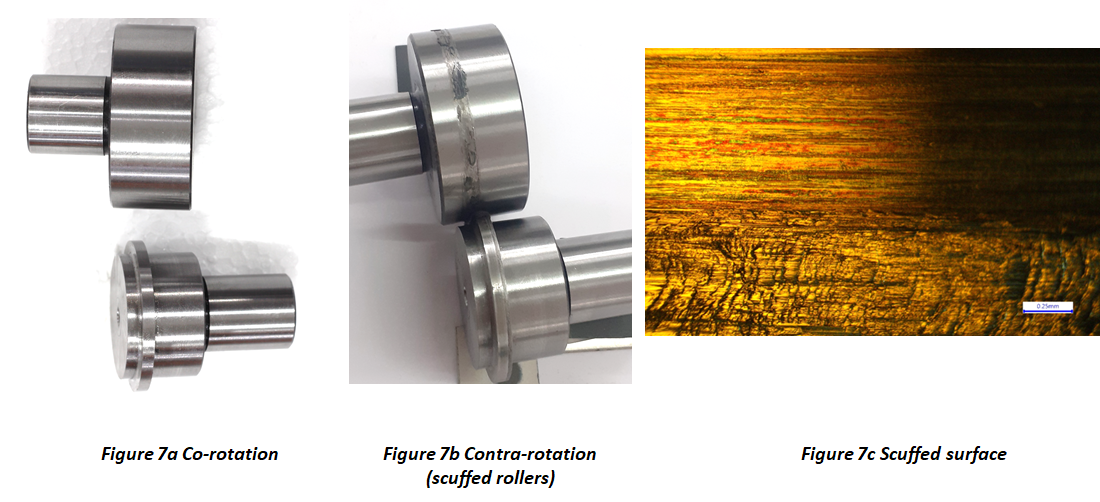 Figure 7a. Rollers that passed the co-rotation test Figure 7b. Scuffed rollers from contra-rotation test Figure 7c. Optical microscopy images showing extensive surface damage. (Marker represents 0.25 mm)
Figure 7a. Rollers that passed the co-rotation test Figure 7b. Scuffed rollers from contra-rotation test Figure 7c. Optical microscopy images showing extensive surface damage. (Marker represents 0.25 mm)
The discs from co-rotation test (Figure 7a) did not show visual surface damage. On the other hand, discs from contra-rotation showed extensive surface damage and scuffing both visually (Figure 7b) and under the optical microscope (Figure 7c).
In summary, the contra-rotation test protocol implemented on Ducom Twin Disc could reproduce scuffing of lubricants under starvation without resorting to extremely high high loads or entrainment speeds that have been previously reported. The failure could be detected accurately using simultaneous friction and vibration data.
we are here to help you! reach out to us below
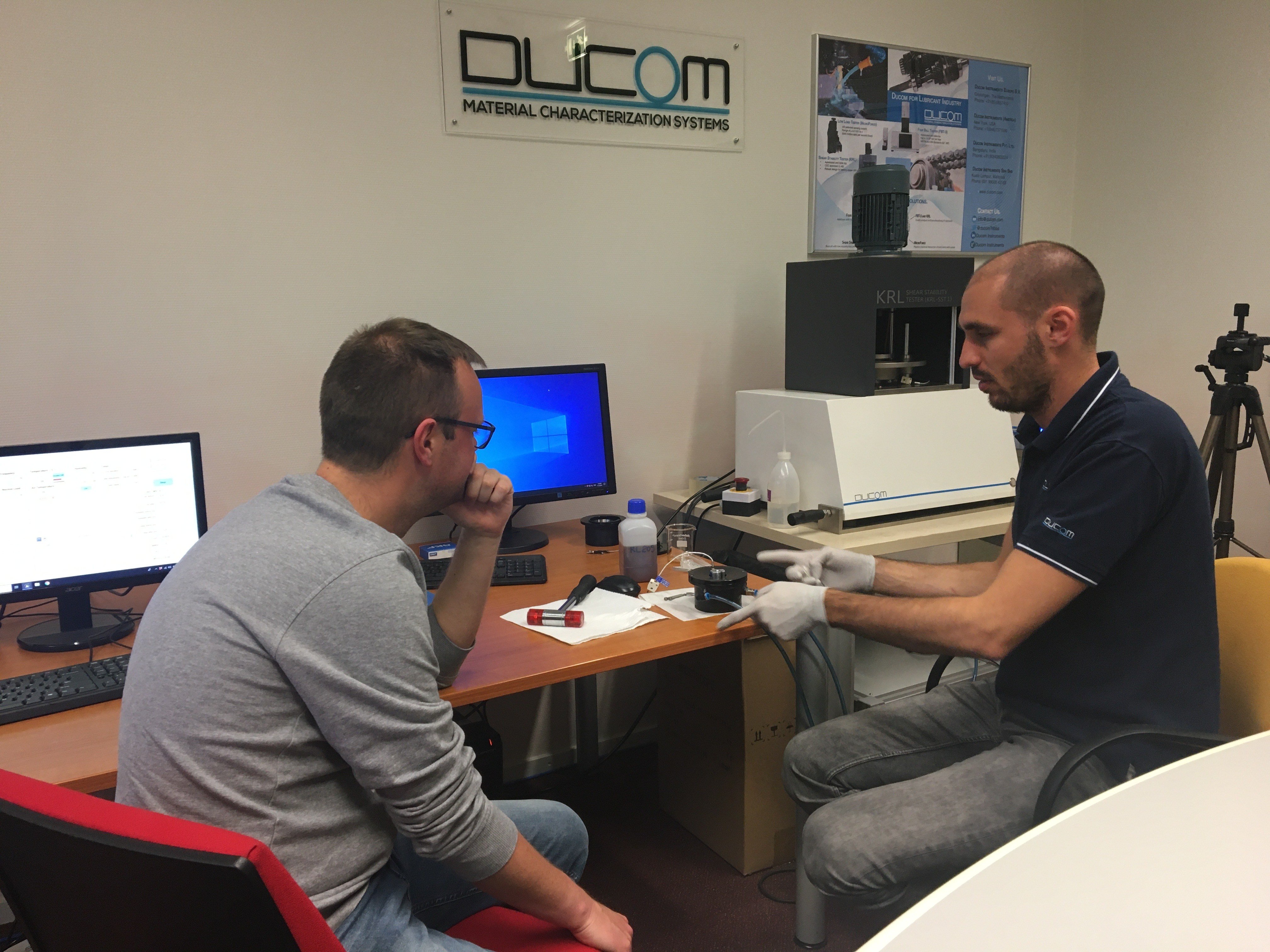
These Stories on friction
USA: +1 (847) 737-1590
India: +91 (80) 4080-5555
Netherlands: +31 (85) 065 74 10